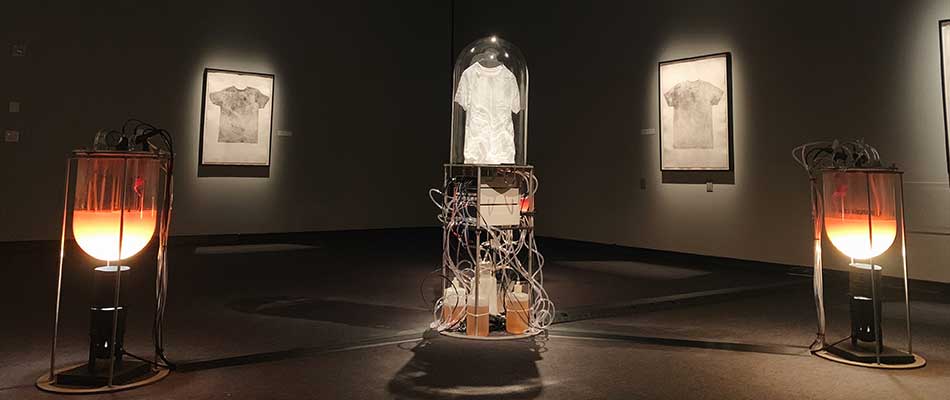Text by CLOT Magazine

The Ars Electronica was born in 1979 with the premise of providing room for experimentation, evaluation and reinvention. Later in 1987, the Prix Ars Electronica was launched by Ars Electronica co-founder Hannes Leopoldseder. Each September, the festival attracts many participants to Linz, Austria. Prix Ars Electronica annually awards creativity and innovativeness in using digital media under several categories. This year’s categories are Computer Animation, Interactive Art +, Digital Communities, Digital Musics & Sound Art, Artificial Intelligence & Life Art, u19 – CREATE YOUR WORLD, and Visionary Pioneers of Media Art.
The winners receive the Golden Nica statuette and the chance to exhibit at the Ars Electronica Festival in Linz. At CLOT Magazine we have spoken to a few of this year’s awarded artists: Paul Vanouse, Christina Agapakis, Špela Petrič, and Adam Harvey.
Paul Vanouse contemplates the present-day meaning of Labor. The exhibition recreates the smell of people straining in demanding circumstances, which is produced by different strains of bacteria in three bioreactors. These bacteria normally live on human skin and are to blame for body odour. The smells produced are merged in the centre of the room soaked through a T-shirt, dispersing them around. Since microbiota is an essential part of who we are and indispensable to bodily functions, the project challenges our definition of self. It also highlights the growing field of microbial manufacturing and questions the exploitation of living things. It invites contemplating the blurring lines of life and labour, product and produce.
VFRAME, developed by Adam Harvey, which received Award of Distinction, is researching how computer vision can use object detection to find illegal munitions in conflict zones. It has previously worked with the Syrian Archive to create a visual search engine. It is currently designing 3D-modeled photorealistic imagery based on real images, which can be inserted into a customizable 3D setting. This technique can produce training data for object detection models for objects with few examples and potentially greatly multiply computer vision’s uses for human rights researchers.
Another recipient of Award of Distinction, the three-part exhibition Confronting Vegetal Otherness, explores the relationship between vegetal life and humans and reveals our anthropocentric attitudes. For Skotopoiesis, Špela Petrič stands before a field of crest blocking the light shone, which etches her silhouette in the cress because of her shadow. During Strange Encounters, algae and human cancer cells are left to interact, resulting in the engulfment of algae by cancer cells. Finally, Phytoteratology demonstrates what happens when plant-human embryos are developed. Špela Petrič intends to start a conversation about overlooked plant ethics and urges us to extend our human-centric outlook to incorporate all living beings.
Resurrecting the Sublime, which received Honorary Mention, aimed to recreate the scents of flowers lost to extinction due to human activities. Dr Christina Agapakis’ team used the DNA of extinct flowers and synthetic biology to infer the genes responsible for smell-generating enzymes. The team recreated the flowers’ fragrances using similar scent molecules. Resurrecting the Sublime compels us to ponder and reevaluate our actions contributing to the destruction of habitats.
The Golden Nica statuettes are presented to each year’s winners at the Ars Electronica Festival in early September in Linz.






